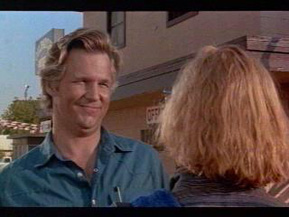Chapter Two: Texasville vs. The Evening Star
By Brett Ballard-Beach
July 7, 2011
This week, Chapter Two wraps up its look back at sequels that have been a long time coming with a Lone Star State mano y mano between two films that couldn’t be more different (in terms of tone and their success as entertainment) but that also share a lot in common with each other and with the films this column has been profiling over the past two months.
Making a sequel to a moneymaking cash cow may be a no-brainer in Hollywood, but what about a film that is financially successful, critically acclaimed, a multiple Oscar winner, one that wears the mantle of “beloved” as well as any film can? It may still be a no-brainer for the moneymen involved, but there’s a lot more at risk, namely the legacy of the original film. Neither of these sequels was intended to launch a franchise, but both took a risk by choosing to extend a tale that could easily enough have been left alone, and yet both were calculated as crowd-pleasers, with full intentions of reaching a wide audience. Texasville ran into distribution troubles and wound up with a release in only a couple hundred theaters and didn’t crack the $3 million mark. The Evening Star was set forth in a modestly wide debut of around 1,300 screens and played for only a few weeks, eking out just under $13 million.
The perverse irony is that both films failed in their commercial endeavors, but not spectacularly so, not by enough to remain on the radar by even that measure. They came and went so quietly; it can be easy to forget, these years later, that they are still out there. (Although, if my favorite Portland indie video store, Movie Madness, is to be believed, and I have no reason to doubt, The Evening Star is out of print on DVD, meaning there is just that much less “there” out there.)
Texasville (1990) and The Evening Star (1996) took 19 years and 13 years respectively to reach the screen largely because they were based on book sequels that didn’t come out until many years after the movies. In terms of their journey from the page to the screen, each of them arrived in a shorter amount of time then it took the first films (The Last Picture Show and Terms of Endearment) to achieve their adaptation from the literary to the celluloid medium.
For Texasville, the task was aided by the return of the co-writer/director of the first film, Peter Bogdanovich, as well as the key cast members who were still left alive at the end of The Last Picture Show. The Evening Star marked the directorial debut of an author famous in another medium - playwright Robert Harling - who is best known for penning Steel Magnolias (the play and screenplay), as well as adapting The First Wives’ Club into a surprise hit for Paramount, in the fall of '96, mere months before the Christmas Day release of The Evening Star. In a case of parallelism that suggests to me the powers that be were hoping to catch lightning in a bottle again, Harling’s novice status mirrors television writer and producer James L. Brooks’ first trip to the director’s chair in 1983 with Terms of Endearment. That won Best Picture, Director, Actress, Supporting Actor, and Screenplay Adaptation and wound up pulling in over $100 million. The Evening Star grossed only about a tenth of what its predecessor did and has a single Golden Globe nomination in its corner.
Continued:
1
2
3
4
5




